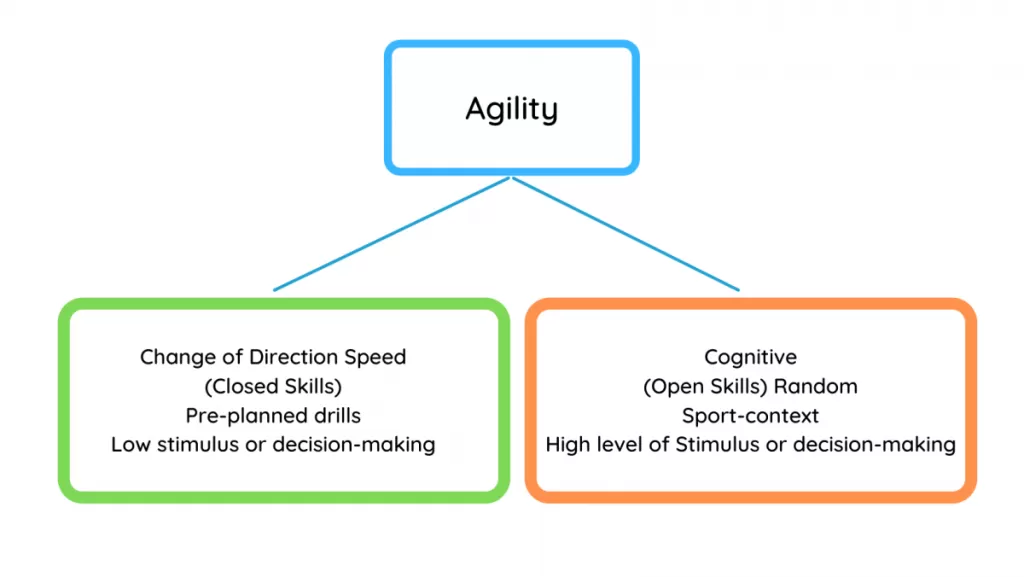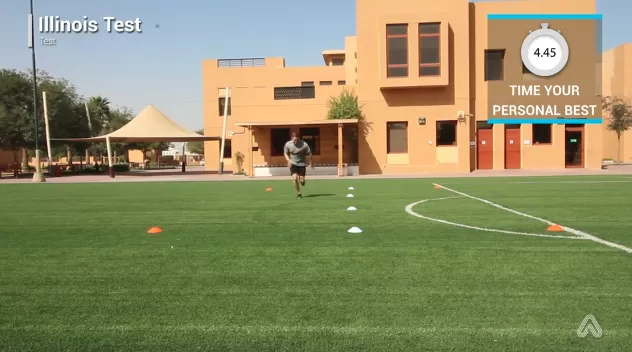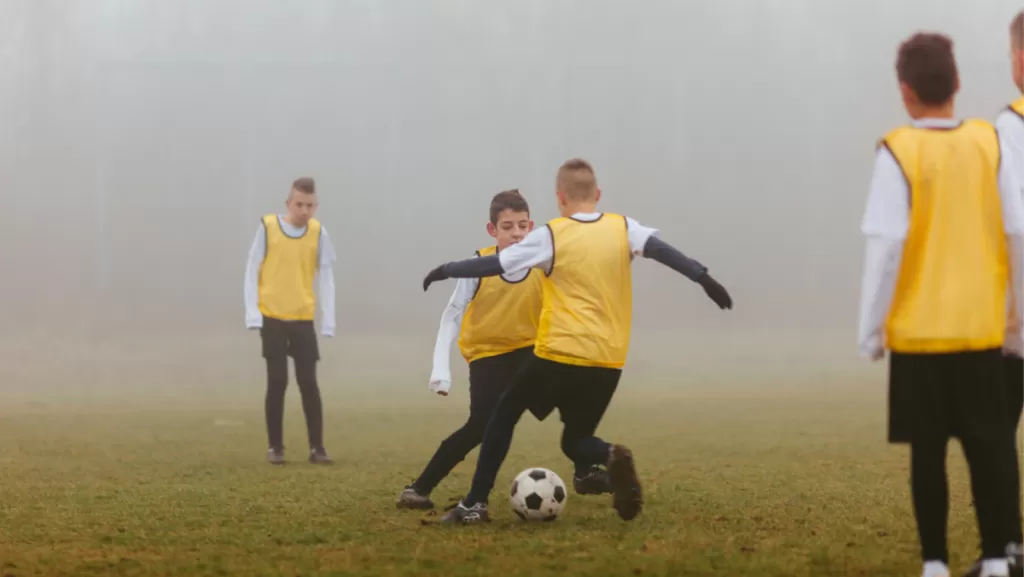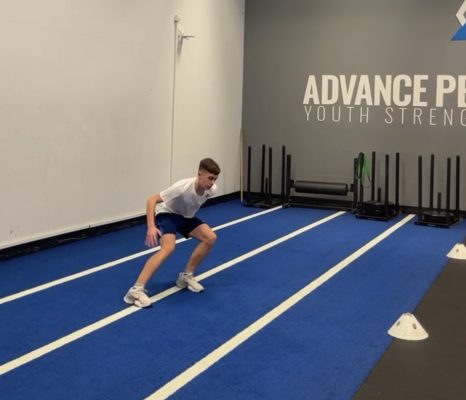It is frequently reported that players and athletes require a high level of agility to play and to perform in their sport (Horicka et al. 2014). And, from watching a host of sports (individual sports, tennis, badminton, and teams’ sports, football, hockey, rugby, netball) this seems intuitively true. Taking a step back and considering this notion from a coach/strength and conditioning coach, agility (in a sporting environment) is extremely difficult to define and measure with context taking centre stage. This has led to many changes and alterations in trying to incorporate a comprehensive definition. The most recent or probably, the most repeated definition of agility (Sheppard and Young, 2006) states that agility is “a rapid whole-body movement with a change of velocity or direction to a stimulus”. Therefore, the concept of agility has several components, which explains why it is so difficult to measure, especially when placing agility into a specific-sporting context. Let’s look at the definition in more detail….
The first part of the definition refers to a whole-body movement and a change at speed, with the last part of the definition referring to or adding a stimulus. From this definition researchers have suggested that agility be placed into different buckets. With the first bucket being, Change of Direction Speed, and the second bucket being more towards a cognitive, decision-making quality to a specific stimulus (visual, experience of the game, anticipation). See Figure 1 below.

Change of Direction Speed (COD)
COD, which are viewed as pre-planned closed drills, with little or low decision-making qualities, are often used in both training and testing (where COD can be considered a sub-component of agility). Various COD tests are available and have been used in the literature as a form of pre-and-post testing of agility to represent sporting physical characteristics and/or performance. For example, the T Test in football (Sporis et al. 2010), Illinois agility test in rugby league (Gabbett, 2002), and the 5-0-5 agility test in netball (Thomas et al. 2019).

Example of an Illinois Test
Cognitive, Random, Reactive Drills
Cognitive (open drills), which by their very nature are more random, require reactive skills, and decision-making qualities in-conjunction with the COD. This makes these types of drills extremely difficult to measure and to quantify, as the task is normally in a sport-context situation, and the overall time is less of important, where scoring or making a pass using the optimal movement and decision is more important.
These drills range from invasion-type games and drills, all the way towards more sport-related or even sport-specific. For example, football coaches regularly use small-sided football drills to develop a host of fitness-elements, with agility/decision-making being a high priority.

Small-sided Football Drills and Games
Youth Training and Development
From a youth training and development model (long-term athletic development), Llyod and Oliver (2012), clearly state that agility should be trained throughout the different ages (pre-post peak height velocity), along with all the other physical capacities, strength, power, speed, and movement skills. Furthermore, Lloyd et al (2013), suggested that agility training for young children (pre-peak height velocity) should be skewed more towards COD and less reactive agility, as the young children can then concentrate on pre-planned drills, driving neuromuscular adaptations, via movement skills and practice. Reactive agility training should still be delivered to the young children, as races and tag-games are fun, but consider the training frequency and volume (Table 1 below).
As the individuals grow and develop, their training ratio can be adjusted, with more of an emphasis on reactive type agility training, which requires cognitive and decision-making elements. These reactive type drills can then be placed and positioned more towards a sporting-context and environment.

Other Factors and Practical Applications
It is also important to note that physical capacities are linked or correlated with developing COD. Young et al. (2015) has suggested that reactive strength, COD training, and linear sprints should be prescribed to help with COD improvements. In the review, Young et al. (2015), did mention that strength training (maximum strength) had a weaker correlation to COD, compared to reactive strength, COD training and sprint training. This is probably because strength training exercises are performed slowly, under control, and thus utilises less of the stretch-shortening cycle (SSC). We need to keep this in perspective and understand that strength training is essential throughout the young athlete’s development, with Lesinki et al. (2016) completing a meta-analysis on youth athletes and strength training and recommending that youth athletes should perform strength training twice a week for overall strength and motor skill(s) development, which are important components before incorporating higher volumes of plyometric and sprint training.
Reactive strength has been shown to have a high correlation with COD performances (Spiteri et al. 2014), due to the quickness of the activity and the utilisation of the SSC. Plyometric type drills are regularly prescribed to develop and improve the SSC, normally by reducing the ground-contact time (see blog on plyometrics), which will ultimately aid in COD performances by reducing possible time constraints. Asadi et al. (2017) investigated plyometric training and maturation and reported that post-PHV individuals completing two plyometric type sessions per week improved their COD compared to pre-PHV individuals. This makes sense due to the changes of tendon stiffness after PHV, along with alter pre-activation strategies (Radnor et al. 2018).
Along the lines of maturation and neuromuscular adaptations, Eisenmann and Malina (2003), reported a difference in neuromuscular output in jumping and agility activities between males and females (ages 8 – 15 years old). The researchers further reported a stagnation or plateau in females jumping and agility performances around the age of 13 years. This is an important consideration with young female athletes, as knee injuries, especially anterior cruciate ligament injuries are frequently reported (Arendt et al. 1999). Furthermore, female athletes who demonstrate valgus knee positions when performing COD activities and cutting movements are at a higher risk in developing knee injuries (Ford et al. 2005). This emphasises the significance of a well-rounded strength and conditioning programme for all young athletes, and especially young female athletes. The exposure to strength through strength training, reactive strength through plyometrics/sprint training, along with the motor skills (balance and coordination) are essential before high volumes of COD training and reactive agility training.
Working and coaching with young athletes from different ages, training experiences and sports, coaches at the Lab tend to prescribe a concurrent training programme, with a slight emphasis on a particular component via each phase of training. The key factor here is that the on-going development of the athlete will help with their sport-specific practice (reactive agility), and overall sport readiness.
Our vision at Advance Performance is to support sport coaches and parents in the delivery of a fluid LTAD programme, minimising overuse injuries any barriers to strength and conditioning.
References
Arendt, E.A., Agel, J., & Dick, R. (1999). Anterior cruciate ligament injury patterns among collegiate men and women. J Athl Train, 34(2), 86 – 92.
Asadi, A., Arazi, H., Ramirez-Campillo, R., Moran, J., & Izquierdo, M. (2017). Influence of maturation stage on agility performance gains after plyometric training: A systemic review and meta-analysis. Journal of Strength and Conditioning Research, 31(9), 2609 – 2617.
Eisenmann, J.C., & Malina, R. (2003). Age and sex associated variation in neuromuscular capacities of adolescent distance runners. Journal of Sport Sciences, 21, 551 – 557.
Ford, K.R., Myer, G.D., Toms, H.E., & Hewett, T. (2005). Gender differences in kinematics of unanticipated cutting in young athletes. Med Sci Sports Exerc, 37(1), 124 – 129.
Gabbett, T.J. (2002). Physiological characteristic of junior and senior rugby league players. Br J Sports Med, 36, 334 – 339.
Horicka, P., Hianik, J., & Simonek, J. (2014). The relationship between speed factors and agility in sport games. Journal of Human Sport and Exercise, 9(1), 49 – 57.
Lesinski, M., Prieske, O., & Granacher, U. (2016). Effects and dose-response relationships of resistance training on physical performance in youth athletes: a systemic review and meta-analysis. Br J Sports Med, 50, 781 – 796.
Lloyd, R.S., & Oliver, J.L. (2012). The youth physical development model. Strength and Conditioning Journal, 34(3), 61 – 71.
Lloyd, R.S., Read, P., Oliver, J.L., Meyers, R.W., Nimphuis, S., & Jeffreys, I. (2013). Considerations for the Development of Agility During Childhood and Adolescence. Strength and Conditioning Journal, 35(3), 2 – 11.
Radnor, J.M., Oliver, J.L., Waugh, C.M., Myer, G.D., Moore, I.S., & Lloyd, R.S. (2018). The influence of growth and maturation on stretch-shortening cycle function in the youth. Sports Med, 48, 57 – 71.
Sheppard, J.M., & Young, W.B. (2006). Agility literature review: Classifications, training, and testing. Journals of Sports Sciences, 34(9), 919 – 932.
Spiteri, T., Nimphius, S., Hart, N.H., Specos, C., Sheppard, J., & Newton, R.U. (2014).
Contribution of strength characteristics to change of direction and agility performance in female basketball players. Journal of Strength and Conditioning Research, 28(9), 2415 – 2423.
Sporis, G., Jukic, I., Milanovic, L., & Vucetic, V. (2010). Reliability and factorial validity of agility tests for soccer players. Journal of Strength and Conditioning Research, 24(3), 679 – 686.
Thomas, C., Ismail, K.T., Simposn, R., Comfort, P., Jones, P.A., & Dos’Santos, T. l (2019). Physical profiles of female academy netball players by position. Journal Strength and Conditioning, 33(6), 1601 – 1608.
Young, W.B., Dawson, B., & Henry, G. (2015). Agility and change of direction are independent skills: Implications for training for agility in invasion sports. International Journal of Sports Science & Coaching, 10(1), 159 – 169.



